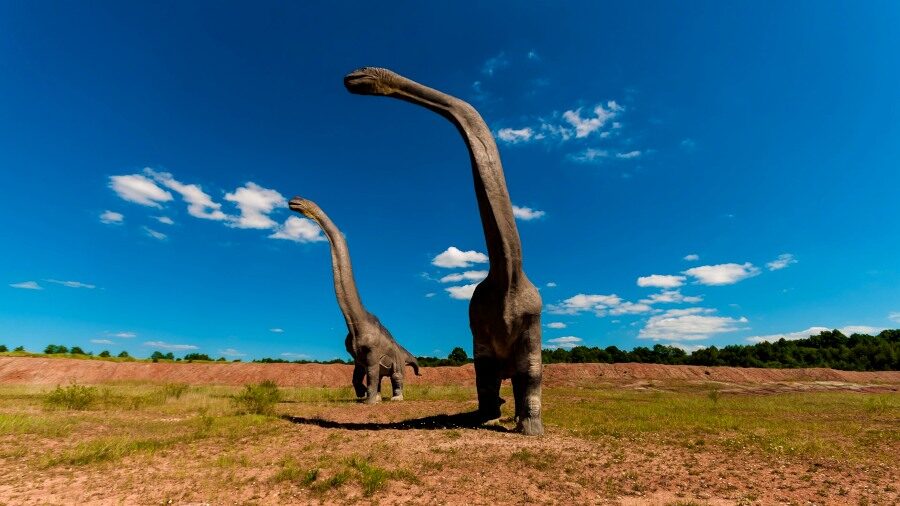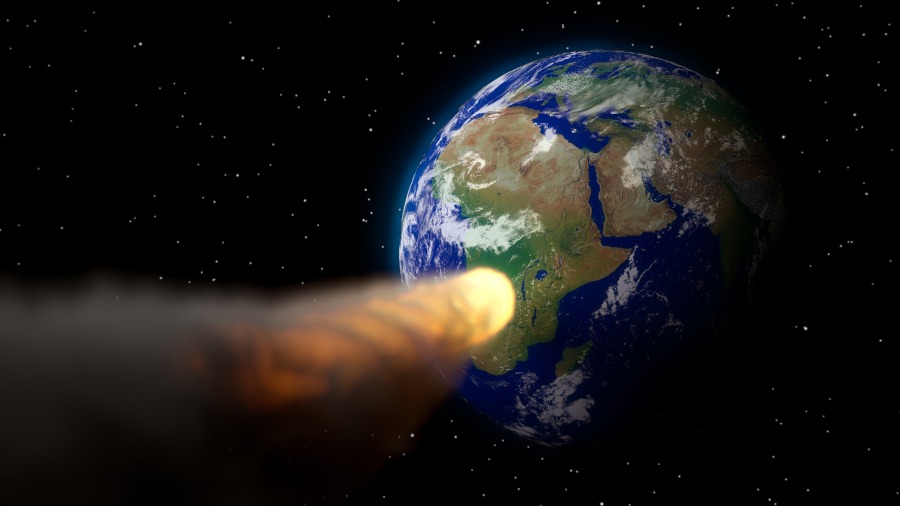Guide
The Cretaceous-Palaeogene boundary and the extinction of the dinosaurs: a look into the past
The Cretaceous-Palaeogene boundary marks one of the most significant turning points in the history of the earth. It lies around 66 million years in the past and marks the end of the Mesozoic era, the age of the dinosaurs, and the beginning of the Cenozoic era, the age of mammals. This transition is closely linked to the mass extinction in which not only the dinosaurs but also numerous other life forms disappeared. The exact causes of this event have fascinated and challenged researchers and scientists for decades.

Cretaceous-Palaeogene boundary: Mesozoic and Cenozoic
The Mesozoic era spanned a period of around 186 million years, from around 252 to 66 million years ago. It was divided into three periods: the Triassic, the Jurassic and the Cretaceous. During the Mesozoic, life on earth developed dramatically. Dinosaurs dominated the land, while the seas were populated by various marine reptiles such as ichthyosaurs and plesiosaurs.
With the entry into the Cenozoic era, which began 66 million years ago, the global ecosystem changed drastically. The dinosaurs disappeared and mammals gradually began to take over their role as dominant land dwellers.
The mass extinction at the Cretaceous-Palaeogene boundary: causes and theories
The exact causes of the mass extinction are still the subject of intense research and scientific debate. One of the most widely accepted theories is the combination of an asteroid impact and the resulting environmental effects.
1. Asteroid impact
Around 66 million years ago, a huge asteroid, which probably had a diameter of around ten kilometres, collided with the Earth. Today, the impact site is located in the Chicxulub crater on Mexico’s Yucatán Peninsula. The impact caused a gigantic explosion that triggered a tsunami, forest fires and volcanic activity.

2. Environmental impact
The effects of the asteroid impact led to a global environmental change. Dust, smoke and ash were thrown into the atmosphere and prevented sunlight from penetrating. This led to a so-called “nuclear winter”, which drastically reduced the temperature on Earth. This in turn affected photosynthesis, disrupted food chains and led to the collapse of ecosystems.
3. Volcanic activity
In addition to the asteroid impact, it is also being discussed whether massive volcanic activity in the Deccan Trapp basalt floods in India could have contributed to the mass extinction. These activities would have released additional quantities of dust, ash and gaseous substances into the atmosphere, which would have increased the environmental impact.
The impact on life: Dinosaurs and more
The mass extinction had a devastating impact on life on Earth. The dinosaurs, which had previously been the dominant creatures, became extinct along with many other species. Many ammonites and marine reptiles disappeared from the oceans. Mammals, birds, reptiles and other species that were smaller in size or lived underground tended to have a better chance of survival.
Conclusion: A look into the past and lessons for the future
The Cretaceous-Palaeogene boundary and the associated mass extinction mark a crucial moment in the history of life on Earth. They remind us how fragile ecosystems are and how even relatively small changes in the environment can have a dramatic impact on biodiversity.
The collision of asteroid impact, volcanic activity and the resulting environmental impacts led to a global event that reshaped the evolution of life on Earth. Studying the Cretaceous-Palaeogene boundary not only helps us to understand the past, but also to gain important insights for dealing with modern environmental challenges. It reminds us how important it is to protect and preserve our environment to prevent future mass extinctions.
- Fault in shipment tracking - 10. May 2024
- Osmosis water in the aquarium: A guide for aquarium enthusiasts - 5. May 2024
- Vietnam: Hundreds of thousands of fish die due to drought and heat - 3. May 2024